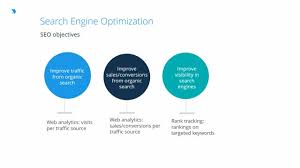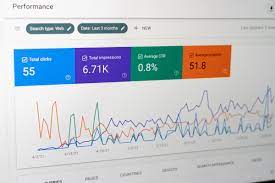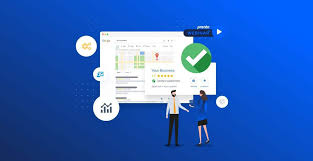Web Search Optimization: Unlocking the Potential of Online Visibility
In today’s digital age, having a strong online presence is crucial for businesses to thrive and succeed. With millions of websites competing for attention, it’s essential to stand out from the crowd. This is where web search optimization comes into play. By strategically optimizing your website, you can improve its visibility on search engine result pages (SERPs) and attract valuable organic traffic.
Web search optimization, commonly known as SEO (Search Engine Optimization), is the process of enhancing a website’s visibility and ranking on search engines like Google, Bing, and Yahoo. It involves various techniques and strategies that aim to improve both the technical aspects of a website and its content relevance.
One key aspect of web search optimization is keyword research. By identifying the keywords and phrases that potential customers are using to search for products or services in your industry, you can optimize your website’s content accordingly. Incorporating these keywords naturally throughout your website can increase its chances of appearing in relevant search results.
Another crucial element of SEO is on-page optimization. This involves optimizing various elements within your web pages such as meta tags, headings, URLs, and image alt tags. By structuring your content in a way that search engines can easily understand and index, you can improve your website’s visibility to both users and search engine crawlers.
Off-page optimization is equally important in web search optimization. This refers to activities performed outside of your own website but still impact its ranking on SERPs. One significant off-page factor is building high-quality backlinks from reputable websites. When other websites link back to yours, it signals to search engines that your content is trustworthy and valuable.
User experience (UX) also plays a vital role in web search optimization. Search engines prioritize websites that provide a positive user experience by being mobile-friendly, fast-loading, easy to navigate, and secure. Optimizing these aspects not only improves your chances of ranking higher on search results but also enhances the overall user satisfaction and engagement on your website.
Regular monitoring and analysis of your website’s performance are crucial in web search optimization. By using tools like Google Analytics, you can gain valuable insights into your website’s traffic, user behavior, and conversion rates. This data allows you to identify areas for improvement and make informed decisions to further optimize your website’s performance.
In conclusion, web search optimization is an essential practice for businesses aiming to maximize their online visibility and reach their target audience effectively. By implementing SEO strategies tailored to your specific industry and target market, you can increase organic traffic, boost conversions, and ultimately achieve long-term success in the digital landscape. So, invest in SEO today and unlock the true potential of your online presence.
7 Essential Tips for Optimizing Web Search (UK Edition)
- Use relevant keywords in your content – make sure the words you use are relevant to your topic and match what people might be searching for.
- Optimise page titles and meta descriptions – these should include your primary keyword and provide an accurate description of the page’s content.
- Create an effective internal linking structure – link related pages together to help search engines understand how they are connected.
- Make sure your site is mobile-friendly – Google prioritises sites that are optimised for mobile devices, so make sure yours works well on all devices.
- Speed up page loading times – search engines prefer fast-loading websites, so look into ways to reduce loading times if necessary.
- Keep content fresh and up-to-date – regularly update content with new information or images to keep visitors coming back for more and improve rankings in search engine results pages (SERPs).
- Monitor analytics data – use tools such as Google Analytics to monitor website traffic, identify opportunities for improvement and track progress over time
Use relevant keywords in your content – make sure the words you use are relevant to your topic and match what people might be searching for.
Use Relevant Keywords in Your Content: Unlocking the Power of Web Search Optimization
When it comes to web search optimization, one of the most crucial tips to keep in mind is using relevant keywords in your content. Keywords are the words or phrases that people use when searching for information, products, or services online. By incorporating these keywords into your website’s content, you can increase its visibility and relevance on search engine result pages (SERPs).
To effectively utilize keywords, it’s important to ensure that they are relevant to your topic and align with what people might be searching for. Conducting thorough keyword research is essential in understanding the language and terms commonly used by your target audience. By identifying these relevant keywords, you can strategically optimize your content to match what potential customers are looking for.
When incorporating keywords into your content, it’s important to do so naturally and organically. Avoid keyword stuffing or overusing them excessively, as this can negatively impact user experience and even lead to search engine penalties. Instead, aim for a balanced approach by seamlessly integrating keywords throughout your content in a way that reads naturally.
Consider placing keywords strategically in key areas such as headings, subheadings, meta tags, image alt tags, and within the body of your text. However, always prioritize the readability and quality of your content over keyword placement. Remember that search engines value high-quality content that provides value to users.
Additionally, keep in mind that web search optimization goes beyond just using relevant keywords. It’s crucial to create informative and engaging content that satisfies user intent. By providing valuable information and answering users’ questions or needs within your content, you can increase user engagement and encourage them to spend more time on your website.
Regularly reviewing and updating your keyword strategy is also important as trends change over time. Stay up-to-date with industry-specific terms and adapt your content accordingly to remain relevant in search results.
In conclusion, using relevant keywords in your content is an essential tip for successful web search optimization. By understanding your target audience, conducting thorough keyword research, and incorporating keywords naturally into your content, you can improve your website’s visibility and attract valuable organic traffic. Remember to focus on providing high-quality content that satisfies user intent and stay updated with evolving trends to maximize the impact of your SEO efforts.
Optimise page titles and meta descriptions – these should include your primary keyword and provide an accurate description of the page’s content.
Optimise Page Titles and Meta Descriptions: Enhancing Visibility and Engagement
When it comes to web search optimization, one crucial tip that cannot be overlooked is optimizing your page titles and meta descriptions. These elements not only play a significant role in improving your website’s visibility on search engine result pages (SERPs) but also provide users with a clear understanding of what to expect from your webpage.
Page titles are the clickable headlines that appear on SERPs, while meta descriptions are brief summaries that provide additional information about the webpage’s content. By incorporating your primary keyword into these elements and accurately describing the page’s content, you can enhance both its relevance to search queries and its appeal to potential visitors.
Including your primary keyword in the page title signals to search engines that your webpage is relevant to specific search queries. This increases the chances of your website appearing in relevant search results, ultimately driving more organic traffic. However, it’s important to ensure that the keyword integration is natural and doesn’t compromise the readability or user experience.
Equally important is crafting accurate and compelling meta descriptions. These concise summaries appear below the page title on SERPs, providing users with a glimpse of what they can expect when they click through to your website. By accurately describing the content of your webpage in an enticing manner, you can increase click-through rates and attract more qualified visitors.
When optimizing page titles and meta descriptions, it’s essential to remember that they should align with the actual content of your webpage. Misleading or irrelevant information can lead to negative user experiences and increased bounce rates, negatively impacting both user engagement and search engine rankings.
Regularly reviewing and updating these elements is crucial as well. As search trends evolve, so do user expectations. By keeping an eye on industry trends and monitoring how users interact with your website through analytics tools, you can identify opportunities for improvement and make necessary adjustments to optimize these elements further.
In conclusion, optimizing page titles and meta descriptions is a vital aspect of web search optimization. By incorporating your primary keyword and accurately describing your webpage’s content, you can improve its visibility on SERPs, attract more qualified traffic, and enhance user engagement. So, take the time to craft compelling page titles and meta descriptions that entice users and align with your website’s content for optimal results.
Create an effective internal linking structure – link related pages together to help search engines understand how they are connected.
Create an Effective Internal Linking Structure: Enhancing Website Connectivity for Improved Search Optimization
When it comes to web search optimization, creating an effective internal linking structure is a powerful technique that often goes overlooked. By linking related pages together within your website, you can help search engines understand the interconnectedness of your content and improve its visibility on search engine result pages (SERPs).
Internal linking refers to the practice of adding hyperlinks within your website’s content that direct users to other relevant pages on your site. These links not only assist visitors in navigating through your website but also provide valuable signals to search engines about the relationships between different pages.
By strategically linking related pages together, you establish a logical and hierarchical structure within your website. This allows search engine crawlers to easily discover and index all of your content, ensuring that no valuable page goes unnoticed.
When implementing internal links, it’s important to consider relevance and context. Linking related pages that share similar topics or themes helps search engines understand the subject matter of each page and how they relate to one another. This can contribute to improved rankings for specific keywords or phrases associated with those linked pages.
Additionally, internal linking provides an opportunity to distribute authority or “link juice” throughout your website. When you link from a high-authority page to another page on your site, some of that authority is passed along, boosting the linked page’s credibility in the eyes of search engines.
An effective internal linking structure also enhances user experience and encourages visitors to explore more of your website. By providing clear navigation paths through relevant internal links, you can guide users towards additional valuable content they may find interesting or useful. This not only increases user engagement but also reduces bounce rates and improves overall site performance.
To create an effective internal linking structure, start by conducting a thorough audit of your website’s content. Identify related pages or topics that can be connected through internal links. Use descriptive anchor text that accurately reflects the destination page’s content, making it easier for both users and search engines to understand the purpose of the link.
Regularly review and update your internal links as your website evolves. As new content is added, ensure that it is appropriately linked to relevant existing pages. Additionally, periodically check for broken or outdated links and fix them promptly to maintain a seamless user experience and avoid any negative impact on search rankings.
In conclusion, creating an effective internal linking structure is a valuable practice in web search optimization. By linking related pages together within your website, you can help search engines understand the connections between different pieces of content, enhance user experience, and improve your website’s visibility on SERPs. So, take the time to strategically implement internal links and unlock the full potential of your website’s connectivity.
Make sure your site is mobile-friendly – Google prioritises sites that are optimised for mobile devices, so make sure yours works well on all devices.
Make Your Website Mobile-Friendly: A Crucial Step in Web Search Optimization
In today’s digital era, the majority of online searches are conducted on mobile devices. As a result, search engines like Google have adapted their algorithms to prioritize websites that provide a seamless mobile experience. If you want your website to rank well and attract valuable organic traffic, it’s crucial to ensure that your site is mobile-friendly.
Mobile optimization refers to the process of designing and developing a website in a way that ensures its optimal functionality and usability on various mobile devices, including smartphones and tablets. A mobile-friendly website adapts its layout, content, and navigation to suit the smaller screens and touch-based interactions of mobile devices.
Google recognizes the importance of delivering a positive user experience on mobile devices. Therefore, they prioritize websites that are optimized for mobile in their search results. When your website is mobile-friendly, it not only improves your chances of ranking higher but also enhances user satisfaction and engagement.
To make sure your site is mobile-friendly, consider the following tips:
- Responsive Design: Implement a responsive web design that automatically adjusts the layout and content based on the screen size of the device being used. This ensures an optimal viewing experience across all devices.
- Mobile-Friendly Navigation: Simplify your website’s navigation for mobile users by using intuitive menus, easy-to-tap buttons, and clear call-to-action elements. Avoid using pop-ups or interstitials that may hinder user experience on smaller screens.
- Fast Loading Speed: Optimize your website’s loading speed for mobile users by compressing images, minimizing code, and leveraging browser caching techniques. Mobile users expect fast-loading pages, so ensure a smooth browsing experience.
- Readable Content: Make sure your text is easily readable without zooming or horizontal scrolling on small screens. Use legible fonts, appropriate font sizes, and sufficient spacing between elements to enhance readability.
- Touch-Friendly Elements: Ensure that all interactive elements, such as buttons and links, are large enough and spaced adequately to accommodate finger taps accurately. This prevents accidental clicks and frustration for mobile users.
By making your website mobile-friendly, you not only cater to the preferences of your mobile audience but also align with Google’s guidelines for improved search rankings. Embracing mobile optimization is a smart move in today’s mobile-centric world, as it enhances user experience, boosts your website’s visibility, and ultimately drives more traffic and conversions.
So, invest the time and effort to ensure that your site works well on all devices. By prioritizing mobile-friendliness in your web search optimization strategy, you’ll be one step closer to achieving online success in the ever-evolving digital landscape.
Speed up page loading times – search engines prefer fast-loading websites, so look into ways to reduce loading times if necessary.
Speed up page loading times – Enhancing your website’s performance
In the fast-paced world of the internet, every second counts. When it comes to web search optimization, one crucial tip is to prioritize the speed at which your web pages load. Search engines like Google, Bing, and Yahoo place great importance on providing users with a seamless browsing experience, and fast-loading websites are favored in search rankings.
Why does page loading speed matter? Well, think about your own online experiences. How often have you clicked on a link only to be greeted by a slow-loading website? It can be frustrating and discouraging, leading you to abandon the site altogether. Search engines understand this user behavior and strive to deliver the best possible results.
To ensure that your website loads quickly and efficiently, there are several steps you can take:
- Optimize image sizes: Large images can significantly slow down page loading times. Compressing images without compromising quality can help reduce file sizes and improve loading speed.
- Minify code: Eliminate unnecessary spaces, line breaks, and comments in your website’s HTML, CSS, and JavaScript files. This process called “minification” reduces file sizes and improves loading times.
- Enable browser caching: Caching allows browsers to store certain elements of your website locally so that they don’t need to be downloaded every time a user visits a new page. This can greatly enhance loading speed for returning visitors.
- Use content delivery networks (CDNs): CDNs distribute your website’s content across multiple servers worldwide. By delivering content from servers closest to the user’s location, CDNs reduce latency and improve loading times.
- Optimize server response time: Ensure that your web hosting provider offers reliable server infrastructure with fast response times. Slow server responses can significantly impact overall page loading speed.
By implementing these measures, you not only improve the user experience on your website but also increase its chances of ranking higher in search engine results. Remember, a fast-loading website not only benefits search engine optimization but also keeps visitors engaged and encourages them to explore more of your content.
In today’s digital landscape, where attention spans are short and competition is fierce, speed matters. So, take the time to evaluate and optimize your website’s loading times. Your efforts will be rewarded with improved search rankings, increased user satisfaction, and ultimately, better business outcomes.
Keep content fresh and up-to-date – regularly update content with new information or images to keep visitors coming back for more and improve rankings in search engine results pages (SERPs).
Keeping Content Fresh: A Key to Web Search Optimization
In the ever-evolving digital landscape, one crucial tip for effective web search optimization is to keep your content fresh and up-to-date. Regularly updating your website with new information, images, or relevant updates not only keeps visitors engaged but also improves your rankings on search engine results pages (SERPs).
Search engines like Google value websites that provide users with the most relevant and current information. By regularly updating your content, you signal to search engines that your website is active, reliable, and worth crawling frequently. This can lead to improved visibility and higher rankings in SERPs.
Fresh content also plays a significant role in attracting repeat visitors. When people find valuable and updated information on your website, they are more likely to return for more. By consistently offering new insights, perspectives, or resources related to your industry or niche, you build trust and credibility with your audience.
Updating your content doesn’t necessarily mean rewriting entire pages. It can be as simple as adding new sections, incorporating recent statistics or research findings, or sharing fresh perspectives through blog posts or articles. You can also enhance the visual appeal of your website by regularly updating images or graphics.
When updating content, it’s important to ensure that it aligns with relevant keywords and topics related to your business. Conducting keyword research can help you identify trending topics or popular search queries in your industry. By incorporating these keywords naturally into your updated content, you increase the chances of attracting organic traffic from search engines.
Additionally, keeping content up-to-date improves user experience (UX). Outdated information can frustrate visitors and give them a negative impression of your website. By providing accurate and current information, you enhance user satisfaction and encourage them to spend more time exploring other areas of your site.
Regularly refreshing content also presents opportunities for social media promotion or email marketing campaigns. When you have something new to share on social platforms or through newsletters, it creates engagement and encourages users to share your content with their networks. This can lead to increased visibility and traffic to your website.
In conclusion, keeping your content fresh and up-to-date is a vital aspect of web search optimization. By regularly updating your website with new information or images, you not only attract repeat visitors but also improve your rankings on SERPs. So, make it a habit to provide valuable and current content to keep both search engines and visitors coming back for more.
Monitor analytics data – use tools such as Google Analytics to monitor website traffic, identify opportunities for improvement and track progress over time
Monitoring Analytics Data: Unveiling Insights for Web Search Optimization
In the ever-evolving world of web search optimization, staying on top of your website’s performance is key to achieving success. One powerful tool that can provide valuable insights is Google Analytics. By monitoring analytics data, you can gain a deeper understanding of your website’s traffic, identify opportunities for improvement, and track your progress over time.
Google Analytics offers a wealth of information about your website’s visitors, including their demographics, interests, and behavior. By analyzing this data, you can gain insights into who your audience is and how they interact with your site. This knowledge allows you to tailor your content and marketing strategies to better meet their needs.
One crucial aspect of monitoring analytics data is tracking website traffic. By examining metrics such as the number of visitors, page views, bounce rate, and average session duration, you can assess the overall performance of your website. Are you attracting enough visitors? Are they staying engaged or leaving quickly? These insights help you identify areas that need improvement and make data-driven decisions to optimize user experience.
Identifying opportunities for improvement is another valuable aspect of monitoring analytics data. By examining which pages have the highest bounce rates or the lowest conversion rates, you can pinpoint areas where visitors may be dropping off or encountering obstacles. Armed with this knowledge, you can make adjustments to improve those pages’ content, design, or functionality to increase engagement and conversions.
Tracking progress over time is essential in web search optimization. By setting benchmarks and regularly monitoring key performance indicators (KPIs), you can measure the effectiveness of your SEO efforts. Are your rankings improving? Is organic traffic increasing? Are conversions on the rise? Tracking these metrics allows you to evaluate the impact of your optimization strategies and make necessary adjustments along the way.
Google Analytics also provides valuable information about how visitors are finding your website. You can see which channels are driving the most traffic – whether it’s organic search, social media, referrals, or paid advertising. This knowledge helps you understand where to focus your efforts and allocate resources effectively.
In conclusion, monitoring analytics data using tools like Google Analytics is a fundamental practice in web search optimization. By gaining insights into your website’s traffic patterns, user behavior, and conversion rates, you can make informed decisions to improve your website’s performance over time. So, embrace the power of analytics and unlock the potential to enhance your online presence and achieve digital success.




